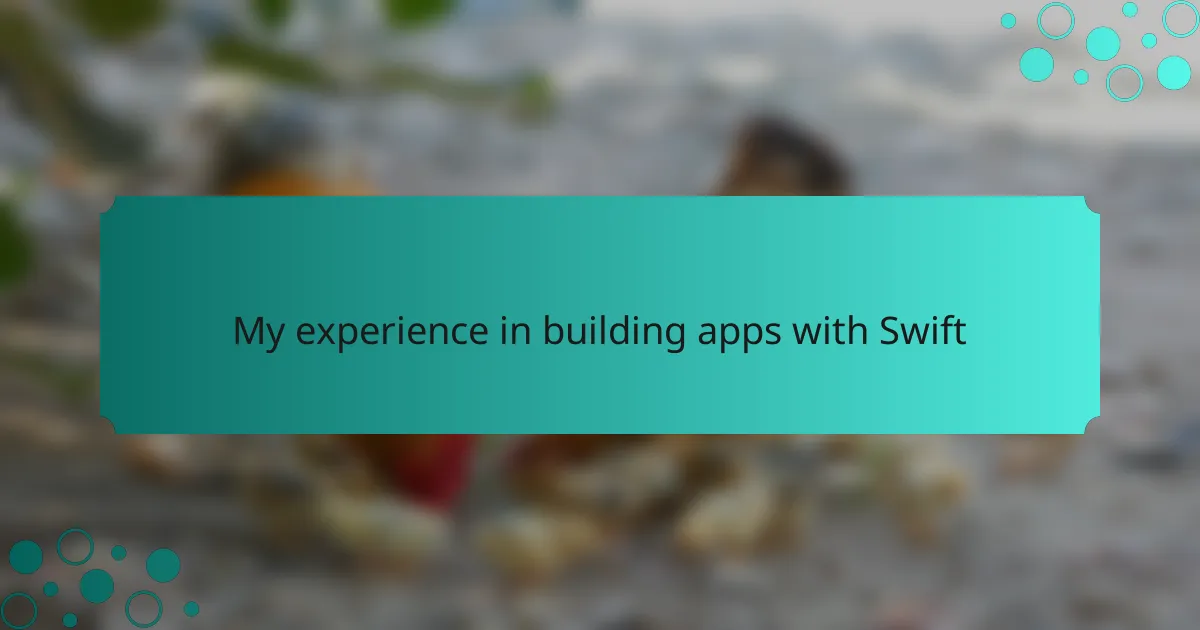Key takeaways
- Swift features a user-friendly syntax and strong typing system, making it a great choice for both beginners and experienced developers.
- Setting up a development environment with Xcode and related tools like CocoaPods and SwiftLint is crucial for a smooth app development experience.
- Consistent practice and community engagement are key to overcoming challenges and enhancing skills in Swift programming.
- Embracing mistakes as learning opportunities fosters growth and proficiency in app development.
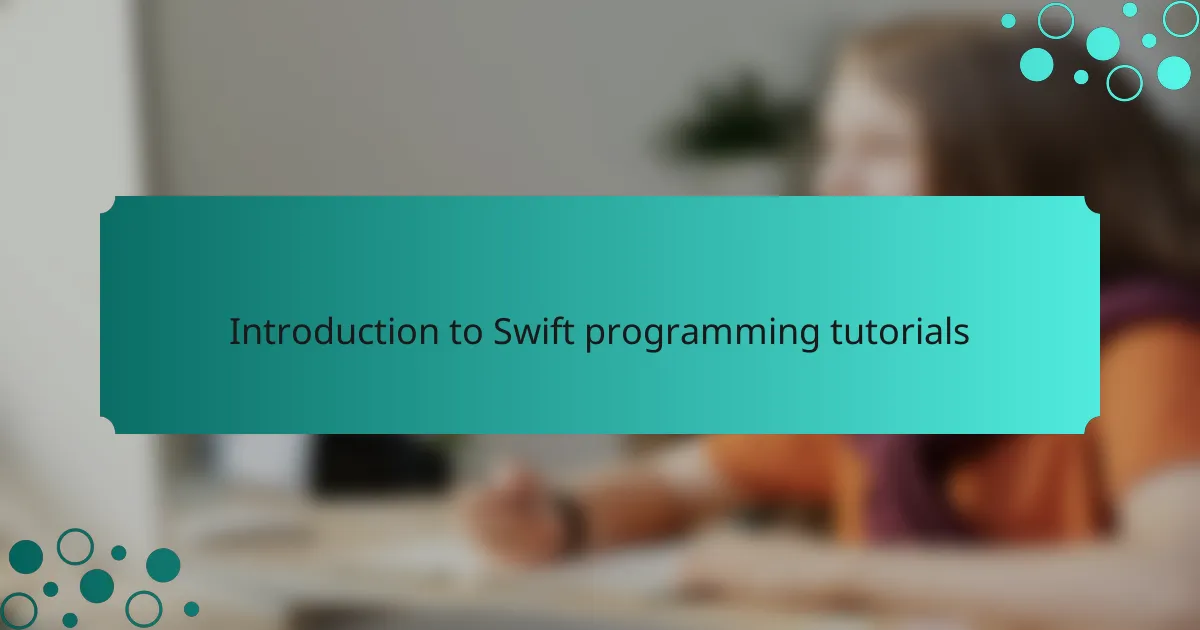
Introduction to Swift programming tutorials
When I first started learning Swift, it felt like unlocking a whole new world of possibilities in app development. Swift is not only user-friendly but also powerful, making it a great choice for newcomers and seasoned developers alike. I remember the first time I built a simple app; the sense of accomplishment was exhilarating, and it motivated me to dive deeper into the Swift ecosystem.
I often find that Swift’s clean syntax and strong typing help mitigate common programming errors, making the learning curve less steep. It’s incredible how quickly I was able to transition from basic concepts to more complex features like closures and optionals. Overall, I believe Swift programming tutorials can greatly enhance your understanding, especially when paired with hands-on practice.
| Feature | Swift | Other Languages |
|---|---|---|
| User-Friendly Syntax | Yes | Varies (often more complex) |
| Performance | High | Varies |
| Community Support | Growing | Established |
| Type Safety | Strong | Varies |

Key features of Swift language
When I first dove into Swift, the language’s safety features truly impressed me. Swift’s strong typing system catches errors at compile time, which saved me countless debugging hours. I vividly remember the relief I felt when the optional types prevented my app from crashing due to nil values, a frustrating ordeal I often faced in other languages.
Another aspect that stood out to me was the performance. Swift code runs faster than its predecessor, Objective-C, thanks to its modern architecture. A noticeable improvement I experienced was in the responsiveness of my apps. The ability to write clean and concise code made my development process smoother, and honestly, more enjoyable.
Here’s a simple comparison of Swift with a couple of other programming languages based on some key features:
| Feature | Swift | Objective-C | Java |
|---|---|---|---|
| Type Safety | Strong | Weak | Strong |
| Performance | High | Moderate | Moderate |
| Syntax | Modern & Clean | Verbose | Similar to C |
| Optional Types | Yes | No | No |

Setting up your Swift development environment
When I first started building apps with Swift, setting up the development environment felt a bit daunting. However, once I had everything in place, it was incredibly satisfying to see the code come to life. I remember the excitement of launching my first app right from my freshly configured Xcode—it was a moment of triumph for me.
To get started with Swift development, here’s what you’ll need to do:
- Install Xcode: This is your primary Integrated Development Environment (IDE) for Swift. It’s user-friendly and powerful.
- Get a Mac: Swift development is best done on macOS, so having a Mac is essential.
- Create an Apple Developer Account: While you can start coding for free, having an account opens up more opportunities, like testing on devices.
- Set up a Simulator: Xcode comes with a built-in iOS Simulator that lets you test your apps without needing a physical device.
- Familiarize Yourself with Interface Builder: This tool helps create intuitive user interfaces, which I found quite fun to dive into.
Building my environment felt like laying the groundwork for a new adventure, and it made all the difference in my development journey.
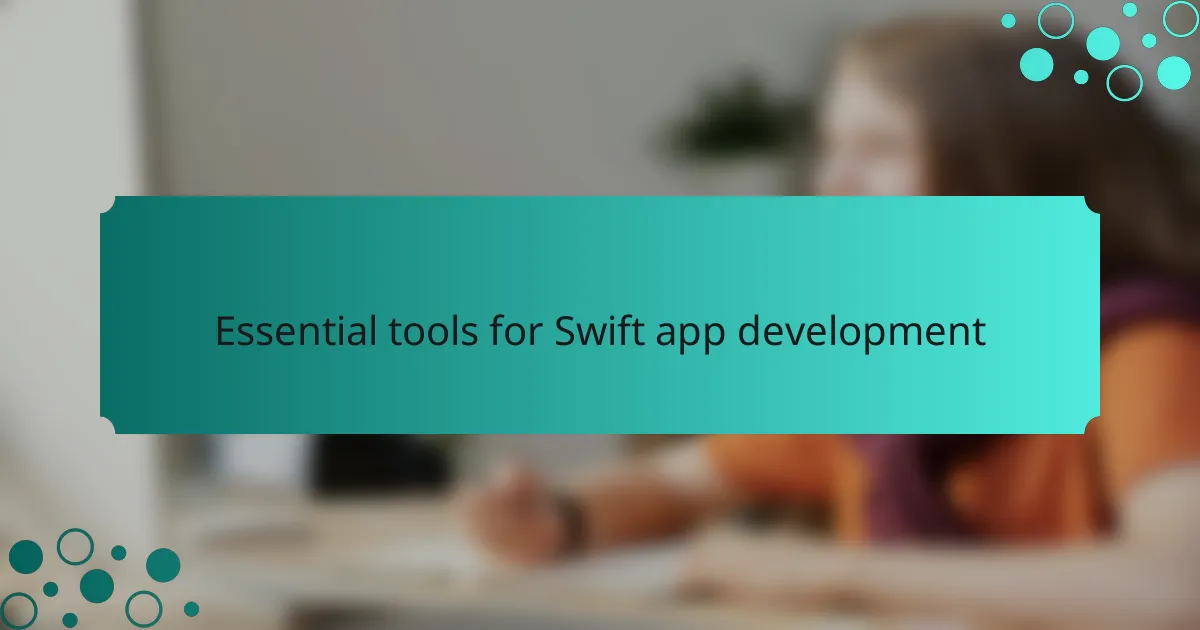
Essential tools for Swift app development
When I first dived into Swift app development, I quickly learned that having the right tools can make all the difference. Xcode is essential, as it’s the main integrated development environment (IDE) for Swift. I remember feeling a mix of excitement and intimidation when I opened it for the first time—so many features! But once I got the hang of it, it became my best friend in building apps.
Another useful tool is CocoaPods, which streamlines the process of managing dependencies in your project. I often struggled to keep track of various libraries, but CocoaPods made it a breeze. Additionally, I found SwiftLint invaluable for maintaining code quality. It helped me enforce coding style conventions and catch potential issues early, which gave me peace of mind.
Here’s a comparison of some essential tools for Swift app development:
| Tool | Purpose |
|---|---|
| Xcode | Main IDE for developing Swift applications |
| CocoaPods | Dependency manager for integrating third-party libraries |
| SwiftLint | Tool for enforcing coding style and best practices |
| Simulator | Testing apps across different Apple devices without needing physical devices |
| Git | Version control system to manage code changes |
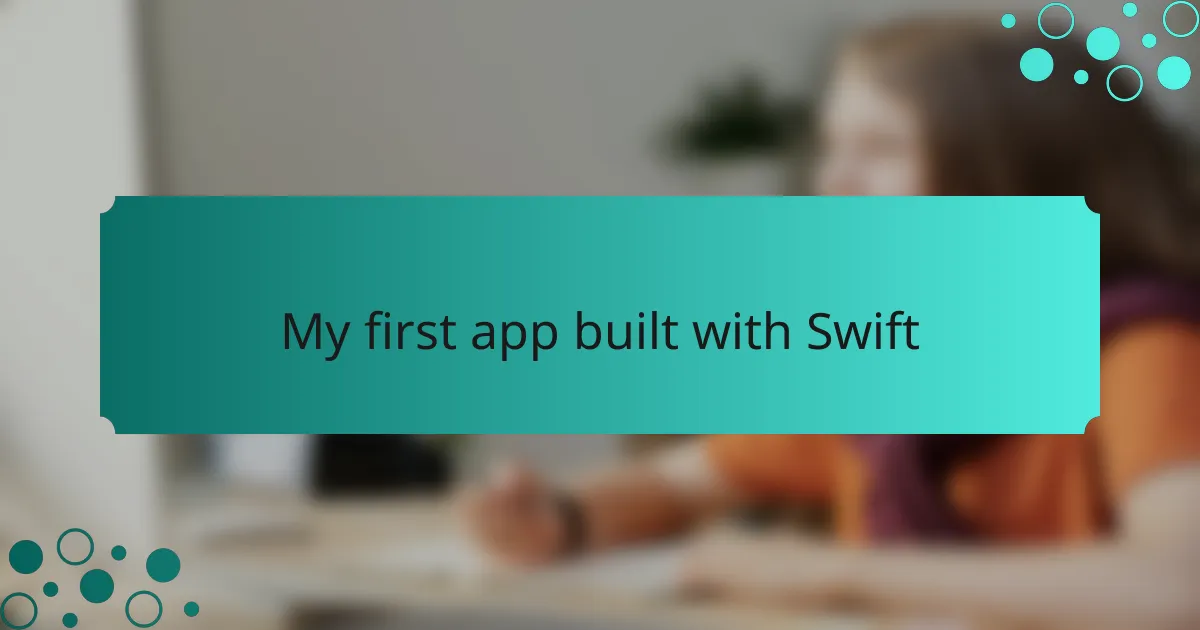
My first app built with Swift
When I first ventured into app development with Swift, it was both exhilarating and daunting. I vividly remember the excitement of my first project: a simple to-do list app. I was amazed by how intuitively Swift’s syntax flowed, making the initial learning curve feel more like an adventure than a chore.
I juggled numerous challenges, from debugging my first layout issues to navigating the intricacies of Swift’s optionals. Yet, overcoming these obstacles felt incredibly rewarding. Seeing my app on my device filled me with a sense of accomplishment that propelled me further into the world of programming.
Here’s a comparison table that summarizes my initial experiences with different aspects of building my first app:
| Aspect | Swift |
|---|---|
| Simplicity | High |
| Learning Curve | Moderate |
| Performance | Excellent |
| Community Support | Strong |

Learning curves and challenges faced
Building apps with Swift has certainly come with its share of learning curves and challenges. Initially, I found the syntax a bit tricky to grasp. It was both exciting and frustrating to dive into it, especially when I encountered my first debugging session, which felt like solving a complex puzzle.
As I progressed, I faced challenges like understanding asynchronous programming and managing memory effectively. Each obstacle taught me valuable lessons, and I slowly started to appreciate the elegance of Swift. It turned out that these struggles were essential for growth and pushed me to become a better developer.
Here’s a comparison table summarizing some of the key challenges I’ve faced while learning Swift:
| Challenge | Solution |
|---|---|
| Syntax Complexity | Used online resources and tutorials |
| Debugging Errors | Practiced debugging techniques and tools |
| Asynchronous Programming | Studied examples and built simple projects |
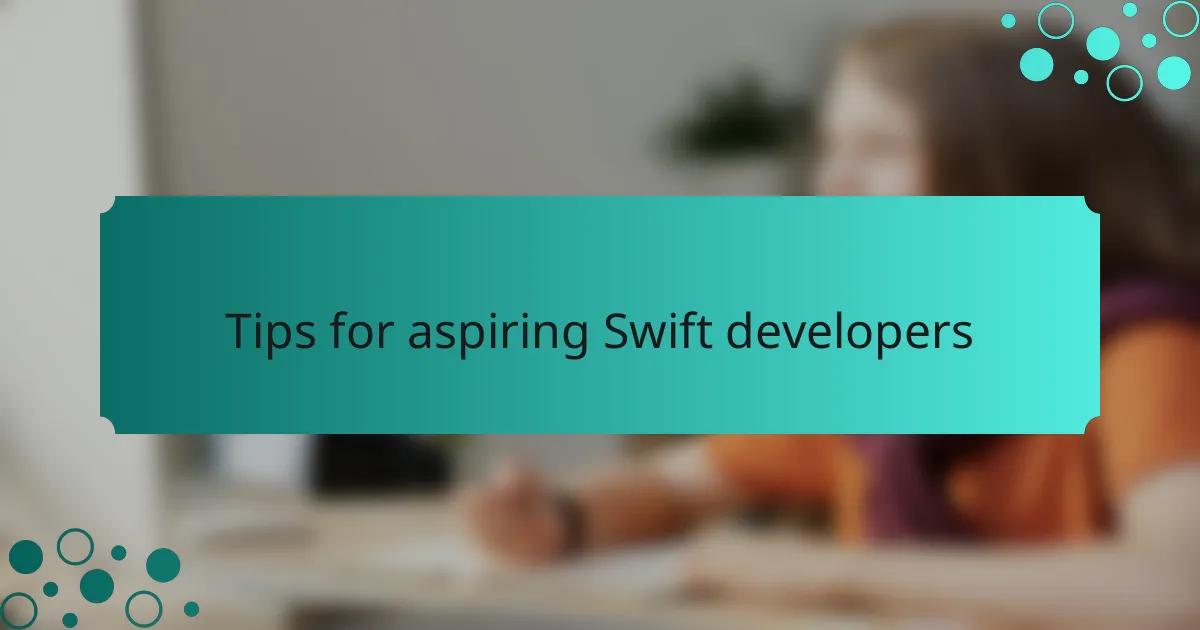
Tips for aspiring Swift developers
When I think back to my early days as a Swift developer, I can’t stress enough the importance of practicing consistently. It wasn’t just about reading tutorials or watching videos; it was about rolling up my sleeves and writing code every day. Each line of code taught me something new, whether it was a feature I hadn’t yet tried or a bug that needed fixing. Have you ever found that the practical application of knowledge really solidifies your understanding? I certainly did.
Another piece of advice is to immerse yourself in the Swift community. Connecting with other developers can provide immense support, whether through forums, local meetups, or online groups. When I first shared my projects, the feedback I received was invaluable. It also helped me stay motivated—you know the feeling when someone genuinely appreciates your work? It’s both exhilarating and encouraging.
Lastly, don’t shy away from making mistakes. I remember encountering countless errors while building my first app, and at times, it was disheartening. However, each mistake was a stepping stone to becoming more proficient in Swift. Embracing challenges and viewing them as learning opportunities helped me grow. Have you encountered setbacks? Trust me, they’re part of the journey, and they mold you into a better developer.
